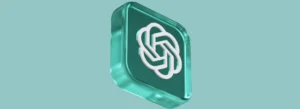Organizations have been buying – or, more precisely, investing in – IT help desk and then IT service management (ITSM) tools for the last three decades. Customer needs and wants have grown – both in line with new ITSM best practice and technological innovations – as have the needs of those who are served. These and other factors have all influenced what’s required of ITSM tools, with it slowly filtering through to the tool selection process.
This blog outlines five key ways that these factors have changed, and will continue to change, the way that organizations select their ITSM tools.
Key way #1: A focus on value over functions and features
The talk of business value, and of “outcomes over outputs,” is nothing new. More recently though, it is becoming far more prevalent in ITSM tool selection and perhaps not via the route that you’d think.
Rather than it being a customer-led change, where customers are wanting to know more than what the tool is going to cost. Instead, it has been a tool vendor change in marketing and selling practices – one that moves the focus from what the customer can do with the tool to what it can achieve.
For example, in the case of change management (or “change control” if you’re already using the new ITIL 4 terminology). While traditionally, RFPs might have included a long list of change-management-related features – a more value-based approach to buying change management capabilities is to ascertain how the tool will:
-
Protect business operations from the adverse impact of uncontrolled changes
-
Reduce risks and meet governance requirements when making changes
-
Work with the corporate DevOps toolchain
-
Speed up IT and business change
Allowing the tool vendor to articulate how their solution helps (and delivers value) rather than simply being a long list of change features requiring “yes” or “no” answers.There’s also a second perspective of value to consider here too – that of enterprise service management (or “back-office digital transformation”), where ITSM capabilities are used to improve services, performance, and outcomes in other business functions such as human resources (HR). It’s pretty logical – the more an organization can use, and benefit from, a fit-for-purpose ITSM tool, the higher the level of realized value.
Key way #2: Wanting usability over capabilities that too few customers actually use
This is definitely the key to a successful tool adoption and in some ways linked to way #1 above.
Traditionally, ITSM tool RFPs asked for everything possible – usually thanks to the copying of another organization’s RFP template – rather than what was actually needed by the procuring organization. The result being that the purchasing decision was likely swayed by quantity over quality – despite the fact that much of what was asked for won’t be used (by the customer) either initially or in the future. With it then unsurprising that the ITSM industry continues to see such high levels of ITSM tool churn – the wrong questions are asked which results in the wrong answers (and decisions).
Now, increasingly, the focus is on what’s actually going to be used by the customer, with it also important that these required capabilities are easy and intuitive to use (by IT staff and end users). This usability also includes the flexibility necessary to change the ITSM tool to better meet the customer organization’s needs, ideally via configuration rather than customization.
Key way #3: The need for specific ITSM tool high-value “essentials”
This is the prioritization, and increased weighting, of ITSM tool capabilities that offer significant benefit to the procuring organization:
-
Automation
-
Self-service
-
Reporting and analytics
Much of what’s offered in terms of support for common ITSM processes is now very similar – perhaps even commoditized – between different ITSM tools, take incident management capabilities as an example. However, with the above four capabilities, the procuring organization is seeking valuable ITSM abilities that do differ between tools.
Importantly, with these capabilities, a hands-on and “customer reference”-based approach is needed to ensure that what’s offered (and demoed) definitely lives up to customer expectations and needs in the real world.
Key way #4: The need for more and more automation, including AI
While automation is already included in way #3, it’s that important that it deserves a way of its own – particularly when artificial intelligence (AI) is included as “AI and automation.”
Automation has long been a great friend to IT in terms of helping with the “heavy lifting” – removing the high-volume, low-value tasks such that highly-skilled IT personnel can then concentrate on higher value-added activities and there’s still so much more that ITSM professionals can automate.
Now AI brings with it even more opportunity. Not only in removing manually-intensive “heavy lifting” tasks through chatbots and the intelligently-automated categorization, prioritization, and routing of new tickets. But also, in gaining valuable insights from large data sets and the better decisions driven by predictive modeling.
No doubt, organizations will be requesting AI-based ITSM tool capabilities over the next twelve months even if they have no plans to use them in the short term.
Key way #5: A high-quality relationship with the tool vendor
While this is the last of the ways, it’s increasingly the most important.
Because, while all of the above ways are important, not having a good working relationship with your ITSM tool vendor will make it difficult to deliver what you need to deliver, both now and in the future. As with way #3, this part of the ITSM tool selection process is very much about learning from existing customers about how they feel about their tool vendor.
So, that’s my five key ways the ITSM tool selection process has changed. What would you add? Please let me know in the comments




